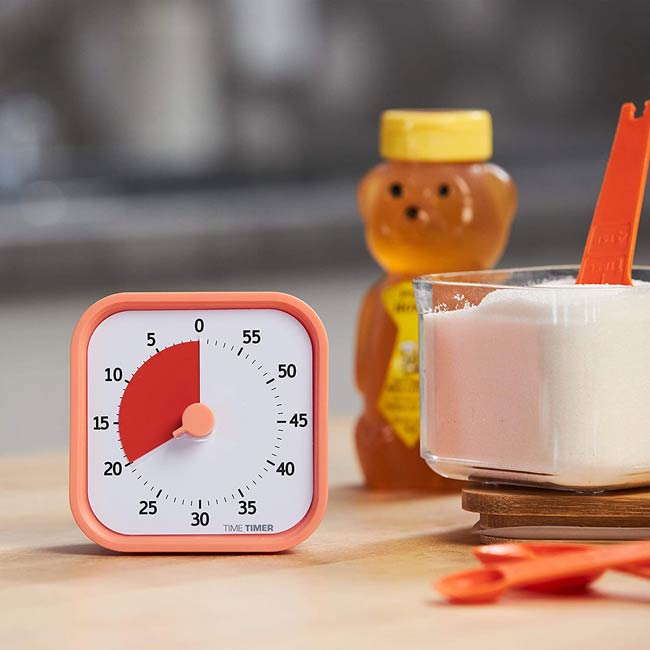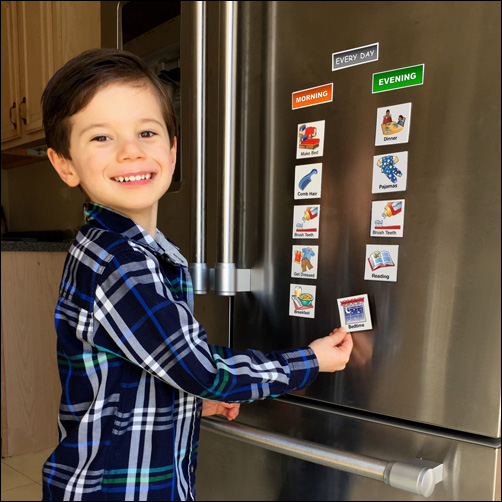8 Ways to Help Children Cope With Transitions Easily
What’s inside this article: 8 tips for parents or caregivers to help their children manage transitions – big or small – more easily.
Disclaimer: This post contains affiliate links.
Transitions are difficult for many children but extremely so for autistic children or kids with ADHD. Yet, everybody must go through transitions every single day.
There are different strategies you can use to prepare your child for transitions, which will make transitions easier for them and you.
What Are Transitions?
Transitions are changes – either in a child’s routine or environment or changing from one thing to another.
This can be something big, like starting at a new school or meeting a new teacher, or smaller changes, like moving from playtime to dinnertime or getting ready for bed.
For many children, especially those with ADHD or autism, these changes are hard because they feel most comfortable and secure when things are familiar and predictable. When something changes, it can make them feel anxious or overwhelmed because they don’t know what to expect.
Many autistic children also struggle with something called cognitive rigidity, which can make transitions challenging.
Helping your child through transitions, whether it’s a big change or just part of their daily routine, can make things easier for them and help them feel more comfortable and secure.
Transition Strategies
Children who struggle with transitions usually have a hard time switching tasks.
This can manifest in many ways, including avoidance, distraction, resistance, or even a full-blown meltdown.
These reactions happen when children lack the appropriate skills to cope on their own.
Transitions cause extreme anxiety for some children because of the need for sameness and because they feel like they have no control.
If your child struggles, it’s important to have support in place that will make transitions easier for them.
1. Use a First-Then Statement
First-then statements were created based on the Premack Principle. This is a useful strategy for small transitions, like changing activities, especially when you’re expecting your children to do something they don’t really enjoy.
The first-then statement looks like this:
“First, (non-preferred), then, (preferred activity)”
First-then statements should always be clear and concise and address the non-preferred activity first, then a preferred activity. Without clear instructions and enough processing time, your child may get overwhelmed quickly.
The first-then statement is like a contract between you and your child. Doing the “then” is contingent upon completing the “first”.
Here are some examples of first-then statements:
“First, put your toys in the box, then we will watch a movie.”
“First, eat your supper, then you can play outside.”
“First, it is bath time, then I will read your book.”
“First, pick up your blocks, then you can paint.”
The consistency of the language, over time, will help your child to understand exactly what is coming next. It also concisely tells the sequence of events that are about to happen.
2. Provide Frequent Change Warnings
A change warning gives your child a heads-up that a transition is coming.
Knowing what to expect helps make transitions easier, and your child will be able to move from one activity to the next more smoothly.
For example, if it was almost bedtime I would tell my kids: “In 10 minutes it will be time to head upstairs and go to bed”
Use change warnings frequently so your child has lots of time to prepare for the transition.
At my house, I actually give the warning that bedtime is coming in one hour. I then remind the kids about bedtime with change warnings at 30 minutes, 15 minutes, 10 minutes, 5 minutes. Then at 2 minutes, I announce there are 2 minutes left, finish what you are doing – save your video games, pick up your toys, finish coloring, pause your TV show for tomorrow, etc.
This strategy works because it allows kids to mentally prepare to transition. No one wants to stop what they’re doing with no warning, especially if it’s something fun.
Kids need the opportunity to finish what they are doing rather than being expected to abruptly stop a task.
When they’re doing something they enjoy it’s easy to lose track of time and forget it’s almost time to move on.
3. Use A Visual Timer
You can use a visual timer on its own. But it works especially well with change warnings.
Having a timer makes transitions easier because your child will have a visual reference for when the activity will be over.
A lot of children don’t fully understand the concept of time so using a digital timer may be confusing for them.
A timer with a dial provides a clear visual, and your child won’t need to stop what they’re doing to check how much time is left.
Timers are great to use everywhere, and you can use them for anything and everything.
We set timers for screen time, counting down to bedtime, daily quiet time, getting ready for school, and more.
The Time Timer (pictured below) also offers a free app.
4. Make Transitions Easier By Bringing Along An Object
Familiarity is comforting to children with autism. A favorite toy or object can help your child stay calm and encourage self-regulation.
A special object that can provide sameness to your child in a constantly changing world, which is helpful for children who struggle with rigidity.
A comfort object can also help through bigger transitions.
For example, bringing a favorite stuffie and blanket on a trip can help your child feel better about being away from home. Or setting their bedroom up the same after moving into a new house.
For some children, you can make transitions easier by letting them take an object from the current activity with them to the next task.
For example, if your child is coloring but it’s time to leave for an appointment, it may help to allow them to bring one of the crayons along.
5. Use a Daily Visual Schedule
Every child can have an easier time with transitions when using a visual schedule.
A lot of children feel anxious about what will be happening during the day, even if it’s always the same routine. The smallest unexpected event can make an anxious child question what else could happen.
It may seem trivial to adults, but something as small as giving your child a blue cup instead of the red one they use every day can lead to them questioning everything. This can be a source of anxiety for children.
For example, they may think “If someone can give me a different cup, what else can change? Will mommy still pick me up from daycare?” It can be terrifying.
Having a visual schedule to refer to reminds children what’s going to happen without them needing to look for constant reassurance. They can see it whenever they want – which lets kids know that nothing has changed.
Visual schedules are common in classrooms but they are great to use at home, too. You can hang it up in a common area where everyone can see it, such as the refrigerator. Or, you can keep a portable schedule wherever you go.
Structuring your home with visuals, schedules, and grounding events can significantly improve your child’s behavior. Read about four ways to structure your home here.
6. Talk About Upcoming Big Changes To Make Transitions Easier
When something big is coming – even something exciting like a vacation, the impending change can still cause anxiety and cause self-regulation, and behavior troubles leading up to the change.
Talk about upcoming changes as early as possible.
Tell your child everything you can about what to expect. If they will be going to a new place, such as school, or daycare, take some pictures or a video of the location and look at it together. Let your child know everything they will be doing there.
Explain what will be the same and what will be different.
If your child is going to an appointment at the doctor or dentist, explain what the doctor will do when you arrive.
Social scripts are a great tool to use when you’re talking about changes with your child. You can make your own social stories in PowerPoint. Keep sentences short and simple, take a few pictures of your own for each page.
Write the story from your child’s point of view.
Children’s books are also useful for familiarizing your child with what to expect during big changes. Plus they show your child that other people go through similar situations and they aren’t alone.
I particularly love the Little Critter collections because they have books for all sorts of events that can make children anxious – from going to the dentist to welcoming a new baby sibling.
7. Practice Makes Perfect
Practice
Try setting up a few different play
For example, you could set up craft supplies at the kitchen table, lego in her bedroom, and Play-Doh in the Rec room. Use the timer, set it for 10 minutes, and rotate through each activity together.
Don’t force your child to do anything they don’t want to do during this time. This is about practicing moving from one activity to the next. Be there to make her feel comfortable, and the practice will make transitions easier over time.
You can try out the different strategies from this post while you’re practicing to help plan what works best.
8. Have A Plan For The Unexpected
A set plan for when something unexpected happens can help your child know what to expect, even during the unexpected.
Having a plan for what to do when there’s an unexpected change will help make the situation less stressful. This is something you may also want to discuss doing with your child’s school.
There are times when the school day won’t go as planned. Situations like substitute teachers, fire drills, assemblies, field days, watching movies in class, etc., can all cause anxiety because they deviate from your kiddo’s regular routine. You can set up a plan for when anything like this pops up.
When something is up at my son’s school, he goes into the Learning Center in the morning, where he can be prepped for what to expect.
This can include just talking about the change, reading a social story, or even making modifications to the school day.
When there is an assembly, the school uses a timer, and my son attends for 5 minutes. When the time is up, he can choose to stay or go into the Learning Center until the assembly is over.




